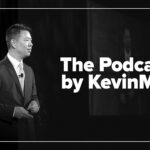KevinMD has been publishing multiple reports about the current widespread, deeply worrisome physician burnout and suicide phenomena. As a card-carrying epidemiologist, I have sought to categorize these reports into the three overarching factors we might see in any epidemic, namely: agent, host, and environment. If we were to use this conceptual framework for research, we could gain a better understanding of how much each of its various facets contributes to this epidemic. Then we should become able to devise improved intervention strategies.
Agent factors are the professional mediating causes that have been identified so far. They include (but are not necessarily limited to): standing and walking for rounds until ready to drop; sleep deprivation, which might lead to medical mistakes, unsafe driving, and other hazards; food deprivation and improper diet; schedule irregularities that often cause circadian rhythm disruptions and menstrual cycle disturbances; the elimination of exercise routines; being unable to go to the bathroom when needed; being on-call via electronic paging systems; and even emotional abuse, public humiliation, and misogyny.
Host factors in this epidemic are those intrinsic to physicians and doctors-in-training. These may well include: perfectionism and compulsivity; a sense of inadequacy or failure; ineffective, self-damaging attempted coping mechanisms like alcohol and/or other possible substance abuse or dependence; both supports and demands from family (including significant others, spouses, children, and/or child care); the risks of physical and mental illness (including post-traumatic stress disorder and depression); and high levels of educational loan debt.
Environmental factors may also foment the burnout epidemic. These may involve the work environment itself and other externalities that affect daily life (both those that are controllable by the individual and those that are not). Environmental impacts may include: requirements for electronic health records; corporate buyouts of medical and surgical practices, which result in loss of physician autonomy; the threat of malpractice lawsuits; unmet needs for personal support in maintenance activities such as car care, laundry, grocery shopping, etc.; a sudden or huge reduction in social supports and/or quality time for self, family, and friends; external constraints that dictate individuals’ personal values or limit their pursuit of these; and multiple barriers to obtaining access to mental health care and drug abuse treatment (including nowhere to turn safely when that kind of help is needed).
Every medical trainee and physician has his or her own individual story. The host factors loom large, but differently, in each person’s life. Institutional issues that influence the burnout epidemic are comprised not only of the environmental factors listed above, but also by the agent factors impacting hosts. It is clear from these lists that multifactorial intervention techniques will be necessary. They are being developed, but mostly still in a limited way. Years or decades of an unhealthy, oppressed lifestyle cannot be undone quickly or easily.
This epidemiologic perspective suggests to me that there is one fundamental underlying problem causing burnout: medical training and practice models often drain hosts’ time and emotional reserves to cope with agent and environmental stressors. This may exacerbate the hosts’ situations greatly and potentially lead to the drastic outcome of doctor suicide.
I have conceptualized a full academic approach to studying physician burnout. However, the promotion of necessary changes in our medical school and work environments might be galvanized into action much faster by case studies of doctor suicides that the press then publicizes—regardless of privacy considerations.
We can and must continue to figure out how to do better. Physicians deserve a lifetime of balance and resilience, not burnout! Prevention of suicide and recovery from burnout are possible.
The author is an anonymous physician.


















![Preventing physician burnout before it begins in med school [PODCAST]](https://kevinmd.com/wp-content/uploads/The-Podcast-by-KevinMD-WideScreen-3000-px-4-190x100.jpg)


